Many communities offer balance training to their residents simply as a component of a group fitness class on the activities schedule. I’m here to tell you that is not enough! Residents need an opportunity for group classes solely dedicated to balance training, as well as balance assessments, equipment, and workouts in their community fitness centers.
Comprehensive balance training programming is often an early success when NIFS begins staffing a fitness center at retirement communities. We’ve been able to engage many residents in the fitness program who previously wouldn’t buy into other modes of physical activity, but they are chomping at the bit to participate in balance training opportunities that can decrease their risk of falls and improve their confidence. Doing so is sometimes a “gateway activity” to help residents recognize their abilities. After building that initial confidence, they experiment with a NuStep or a chair aerobics class. We’ve all got to start somewhere!
NIFS’ Balance Challenge Program-resized-600.png?width=302&height=142&name=c--users-kgootee-dropbox-bc_(2012right)-resized-600.png)
To promote existing balance training programs at our CCRCs, NIFS will hold its inaugural Balance Challenge in March. The Balance Challenge program encompasses different elements of our regularly offered balance training programs and services as well as a few new opportunities for residents. Participants will track their activity on a scorecard and will be required to participate in group classes, educational lectures, assessments, fitness center workouts, obstacle courses, and much more to complete the Challenge. The program is designed with activity options for residents of varying ability levels so it can be marketed to someone new to the fitness program looking to get into a routine, or for seasoned participants to further hone their skills.
All participants in the Challenge will complete a Fullerton Advanced Balance Scale test as well as a pre- and post-program survey in which they will rate their current balance skills and confidence levels. In future programs, we hope to see that our participants are maintaining or improving their balance abilities as well as their confidence levels through engaging in not only the month-long Challenge, but also throughout the year in regularly scheduled programs. (Consider the marketing advantages for a community with data of this nature to back up the effectiveness of your balance programs!)
Things to Consider When Starting a CCRC Balance Program
Here are a few key considerations when launching a comprehensive balance program for your residents:
- Who is qualified to lead these types of classes and services for your residents?
- How will you track the impact the program is having on your residents’ functional abilities and how will you utilize that information?
- How can you utilize resident volunteers to act as your balance champions to demonstrate exercises, provide testimonials, etc., on the effectiveness of the program? (Residents seeing their peers demonstrate exercises may help them get over any fears of participating.)
- How can you partner with your community therapy department in balance program offerings?
Whether your community already has a variety of balance training opportunities, or you are looking to launch some new initiatives, consider how a comprehensive program can help spark enthusiasm in your residents!

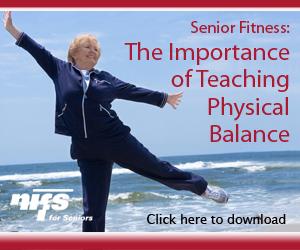
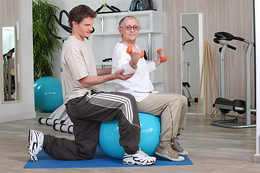 Many Continuing Care Retirement Communities (CCRCs) offer a variety of group fitness classes to their residents. The community personnel who hire the group fitness instructors (GFIs) may benefit from a few pointers on hiring standards beyond someone’s personality alone. Don’t get me wrong, the right personality and ability to build relationships with residents is crucial for making a class successful. However, a narrow focus on personality alone may not provide your residents with the maximum benefits of participating in the activity and could create a dangerous environment.
Many Continuing Care Retirement Communities (CCRCs) offer a variety of group fitness classes to their residents. The community personnel who hire the group fitness instructors (GFIs) may benefit from a few pointers on hiring standards beyond someone’s personality alone. Don’t get me wrong, the right personality and ability to build relationships with residents is crucial for making a class successful. However, a narrow focus on personality alone may not provide your residents with the maximum benefits of participating in the activity and could create a dangerous environment.
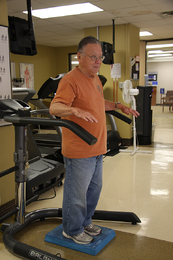 The number-one challenge that the aging population faces is balance because the number-one concern is
The number-one challenge that the aging population faces is balance because the number-one concern is 
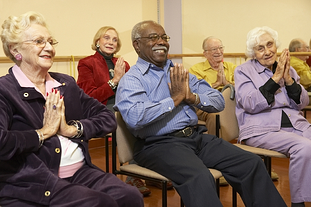 What are some challenges in developing group fitness classes for active older adults? One of the hardest things for me is that there is a wide variety in exercise knowledge and ability. For example, you might have someone who has never exercised a day in their life sitting next to someone who has been exercising in a gym for decades. Or, you may have someone in their middle 60s next to someone who is 85 with two knee replacements.
What are some challenges in developing group fitness classes for active older adults? One of the hardest things for me is that there is a wide variety in exercise knowledge and ability. For example, you might have someone who has never exercised a day in their life sitting next to someone who has been exercising in a gym for decades. Or, you may have someone in their middle 60s next to someone who is 85 with two knee replacements.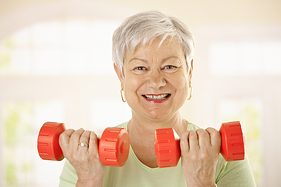 The New Year often provides the fitness industry with a boom of customers hoping to hold true to their resolutions. Many of those resolutions often pertain to unrealistic weight-loss goals.
The New Year often provides the fitness industry with a boom of customers hoping to hold true to their resolutions. Many of those resolutions often pertain to unrealistic weight-loss goals.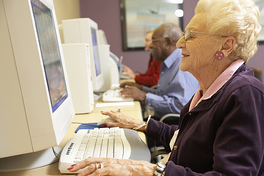 Good posture
Good posture While many residents aren’t burning the midnight oil to ring in the new year on December 31, that doesn’t mean that the spark of renewal and enthusiasm to embrace a new year is any less for these folks. The new year is a great time for senior living communities to launch or promote their community wellness program.
While many residents aren’t burning the midnight oil to ring in the new year on December 31, that doesn’t mean that the spark of renewal and enthusiasm to embrace a new year is any less for these folks. The new year is a great time for senior living communities to launch or promote their community wellness program. among owners and operators of senior living communities toward a focus on resident wellness. The movement is based in
among owners and operators of senior living communities toward a focus on resident wellness. The movement is based in 
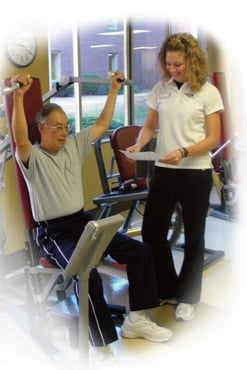 Of course, it’s horribly self-serving for us to say that staffing your onsite fitness center and wellness initiatives isn’t a DIY (do it yourself) project. We’re not above shameless self-promotion, but the truth is, the consequences of making fitness center management a DIY initiative can be costly. Read on to learn NIFS top three reasons to outsource fitness center management of your retirement community or worksite fitness center.
Of course, it’s horribly self-serving for us to say that staffing your onsite fitness center and wellness initiatives isn’t a DIY (do it yourself) project. We’re not above shameless self-promotion, but the truth is, the consequences of making fitness center management a DIY initiative can be costly. Read on to learn NIFS top three reasons to outsource fitness center management of your retirement community or worksite fitness center. 